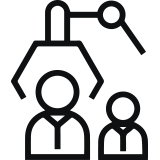7 TYPES OF SOFTWARE TESTINGTHAT ARE HERE TO STAY
Software testing is one of the most critical components of the Software Development Life Cycle (SDLC) and yet, so little is known about it. For instance, did you know that there are more than 150 different types of software tests, and they fall into a few broad categories? That’s what we will explore today.
7 TYPES OF SOFTWARE TESTINGTHAT ARE HERE TO STAY
Software testing is one of the most critical components of the Software Development Life Cycle (SDLC) and yet, so little is known about it. For instance, did you know that there are more than 150 different types of software tests, and they fall into a few broad categories? That’s what we will explore today.
ACCEPTANCE TESTING
Acceptance Testing is a form of software testing in which systems are tested for compliance with business and technological requirements to evaluate its suitability for final delivery to end customers. Simply put, Acceptance Testing assesses whether the given software system fulfills its purpose.

OBJECTIVES
• To validate if the software meets the end-criteria for which it was developed.
• Ensures the absence of bugs and helps developers to proactively fill in functionality gaps before the product enters the market.

TYPES
• User Acceptance Testing (UAT) or Beta Testing.
INTEGRATION TESTING
Integration Testing is conducted in which individual software modules are integrated and tested as a whole.

OBJECTIVES
- To evaluate the compliance of the ‘full’ system as opposed to its individual components.

TYPES
- Big Bang Approach
This involves completing the entire integration process and conducting the testing of all its modules in a single phase. - Incremental Approach
The Incremental Approach conducts testing in a multi-phased manner. It can be further sub-divided into- Top-Down approach – all the top integrated modules are tested first, then the branch of the module systematically, until finally the last related module is tested.
- Bottom-Up
- The Sandwich approach – as the name suggests, adopts a combination of Top-Down and Bottom-Up approach.
UNIT TESTING
- Unit Testing is the fundamental building block of the entire testing family and involves testing the individual components that go into the complete system.

OBJECTIVES
- To evaluate the compliance of the ‘full’ system as opposed to its individual components.
FUNCTIONAL TESTING
As part of functional tests, various inputs are provided to the system in accordance with its functionality and the output is used to verify whether or not it meets the requirements. Functional Testing can be manual or automated.

OBJECTIVES
- Checks whether the software system meets all its functional specifications and is ready for release.

TYPES
- Component Testing
Involves testing individual modules or components to evaluate its functionality, and includes code chunks, web pages, mobile screens, and so on. - Smoke Testing
In Smoke Testing, the critical issues are the main focus, and the objective is to fix them first, rather than performing a comprehensive system testing. - Sanity Testing
In this form of testing, new builds with minor updates are tested to check whether defects have been fixed in the new version and whether any new defects have been introduced. It is not a comprehensive set of tests but only a subset of the entire suite designed to examine the effect of software modification.
PERFORMANCE TESTING
While Functional Tests only check whether the system meets functional requirements, Performance Testing examines other equally critical factors such as the speed, stability, scalability, reliability, and responsiveness under specified workloads.

OBJECTIVES
- The aim of Performance Testing is not only to find defects but to eliminate performance bottlenecks.

TYPES
- Load Testing
Conducted by consistently increasing the load on a system to determine threshold values, it includes reading/writing large volumes of data, executing multiple applications, and so on. - Stress Testing
Stress Testing checks whether systems operate in a graceful manner under stress, e.g., under low CPU, memory, or bandwidth conditions. - Spike Testing
Spike Testing creates periodic spikes in demands on the system to examine whether it continues to perform within acceptable limits. - Soak/Endurance Testing
This involves testing the system under a constant load for a long duration and checking for memory leaks, system failure, overheating, and other such performance issues.
REGRESSION TESTING
Regression Testing is one of the most common forms of testing and involves re-execution of previous test cases. In case the system fails to perform, it would be a regression, hence the name Regression Testing.

OBJECTIVES
- To ensure that the system continues to perform satisfactorily even after c Changes, updates, or modifications.

TYPES
- Unit Regression Testing, which narrowly focuses on code units while blocking complex interactions and dependencies.
- Partial Regression Testing, in which new code is tested against existing code to ensure acceptable performance of the system.
- Complete Regression Testing, which is carried out after major overhauls and multiple modifications to existing code.
USABILITY TESTING
Usability Testing deals with the way end-users interact with a given software system. Typically, it involves observation of subjects by researchers to understand the user experience in the real world.

OBJECTIVES
- Discovering usability problems
- Benchmarking performance
- Usage pattern mapping
- Ease of use
Summary
Testing is a vital aspect that increasingly permeates every phase of the Software Development Life Cycle and enhances the human experience by ensuring the development of safer, more comfortable, economical, and efficient software products.
